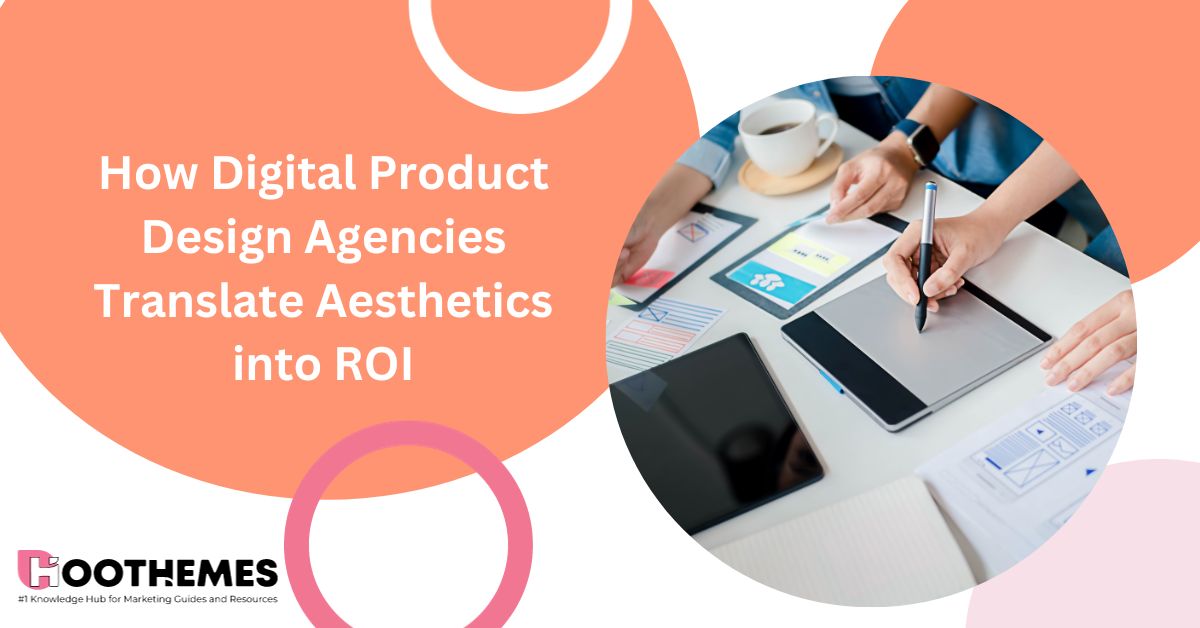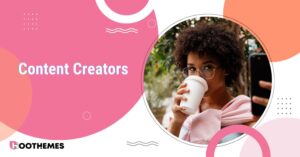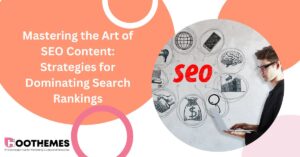In the visually saturated world of digital marketing, aesthetics serve as the silent ambassadors of a brand’s identity. Yet, the impact of product design extends far beyond the mere appeal of surface visuals. In the interplay between form and function, design becomes a key driver of Return on Investment (ROI).
ROI, a fundamental measure of profitability, gauges the efficiency and financial return of investments. In the realm of design and digital marketing, ROI translates the intangible elements of creative work into quantifiable metrics, determining how design directly contributes to sales, engagement, and ultimately, the bottom line.
If you ever wondered how a web design agency crafts products and visuals that have the potential to yield significant business outcomes, then this article is for you. You will also find this post useful if you’ve ever had doubts about the financial value of product design.
The Link Between Product Design and Profitability
The relationship between design and profitability is rooted in the psychology of consumer behavior. The design choices a product design agency makes — be it color schemes, typography, layout, or navigation — do not merely embellish a product.
They shape the user’s experience and influence their journey from prospect to customer. A design that prioritizes clarity and ease can reduce friction, guiding a user naturally toward a purchase with subtlety and efficiency.
Stats and Studies
There is a lot of data that shows that strategic product design works. One study by Forrester Research found that investing one dollar in UX gets back one hundred dollars, which is an ROI of a huge 9,900%.
Similarly, the Design Management Institute’s research found that design-driven companies have outperformed the S&P Index by 219% over ten years. These statistics reveal a clear correlation: design optimizes conversion rates and, by extension, profitability.
The relationship between design and profitability has been substantiated through various studies and observations. Ulla Johansson Sköldberg, a professor emerita in design management, has conducted extensive research demonstrating the financial benefits of design.
For instance, a comprehensive evaluation of over 300 companies participating in design projects funded by the Swedish government between 2003 and 2005 revealed a clear financial payoff for those with a design focus.
These companies experienced significant sales increases attributable to product design, with 27 companies, representing 7-8% of the total, increasing their sales by more than 200 million SEK. The government’s investment of 51 million SEK yielded returns roughly three times their investment through increased sales tax alone.
Even companies that did not see a direct sales increase viewed their design projects as successful due to the development of new ways of thinking and the long-term value of the design thinking know-how that was instilled in them.
The common factor among companies that experienced financial growth was the maturity of their design processes and the integration of design as a core component of their innovation process, underpinned by effective leadership
Design Metrics and Performance Indicators
Product design agencies employ a variety of metrics and performance indicators to measure the success of their designs, ensuring alignment with broader business objectives.
Key metrics often include:
- user engagement levels,
- conversion rates,
- time on site,
- bounce rates,
- and click-through rates.
These are complemented by KPIs tailored to specific business goals, such as lead generation numbers, e-commerce sales, sign-up completions, or customer retention rates.
To validate and refine these metrics, web design agencies often set up A/B testing scenarios to compare different design iterations and directly analyze user behavior. User feedback, gathered through surveys, usability testing, and heat maps, provides qualitative data that further informs the effectiveness of design elements.
This combination of quantitative data and user feedback allows a digital product design agency to make evidence-based decisions that optimize design for business success.
The Financial Value of Brand Identity
The design is pivotal in establishing and nurturing a brand’s identity. It is through design that a brand communicates its essence, values, and promises to the consumer. Consistency in product design across various platforms solidifies this identity, creating a memorable and recognizable brand experience.
This consistency is not just visually appealing but also financially beneficial, as it enhances brand recognition, fosters customer loyalty, and can significantly reduce marketing costs over time.
Quantifying this value involves assessing brand equity, which encompasses brand awareness, customer loyalty, and the brand’s overall reputation. A strong brand identity, built and maintained through strategic design, can grant a competitive edge, often resulting in market dominance and increased profitability.
The power of design in building a brand’s financial value is evidenced by several iconic companies:
- Coca-Cola: The brand’s timeless script and dynamic ribbon, coupled with its classic bottle shape, have become symbols of refreshment and happiness. The recognizable design has helped Coca-Cola maintain its market-leading position and forge a deep emotional connection with consumers worldwide.
- Nike: Nike’s swoosh symbol and motivational “Just Do It” slogan have transcended cultural and linguistic barriers. These design choices encapsulate the essence of victory and determination, creating a global community of loyal customers who associate Nike with athletic excellence and personal achievement.
- Apple: Apple’s commitment to sleek, user-friendly design has not only set industry standards but has also cultivated a dedicated consumer base. The brand’s design philosophy extends to its product ecosystem, retail spaces, and advertising, creating a seamless customer experience that commands brand loyalty and justifies premium pricing.
- Google: Google’s colorful, simple logo and clean interface design reflect its approachable yet innovative brand identity. This design simplicity makes its services universally accessible, fostering trust and reliance among users.
User Experience (UX) and Return on Investment
A positive User Experience (UX) design is strongly correlated with customer satisfaction. It is the UX that makes a website intuitive, accessible, and enjoyable to navigate, leading to a fulfilling interaction with the brand.
Satisfied customers are more likely to become repeat customers, and their positive experiences often translate into referrals, amplifying a business’s reach and potential for profitability.
The ROI of UX improvements is measurable through:
- increased conversion rates,
- reduced customer support costs,
- lower bounce rates,
- and higher retention.
Additionally, the long-term value of customer loyalty, attributable to a superior UX, often results in a compounding return on investment, as loyal customers tend to have a higher lifetime value.
Conversion-Centric Design Strategies
Conversion-Centric Design Strategies are predicated on the focused application of CRO principles within design frameworks to maximize the likelihood of site visitors completing a purchase, signing up for a newsletter, or engaging in any other key performance indicators (KPIs) that a business considers as a conversion.
Digital product design agencies harness an array of techniques to bolster conversion rates. These can include optimizing site speed for rapid content delivery, employing responsive design for cross-device compatibility, and using color psychology to make CTAs stand out.
User navigation is streamlined to minimize obstacles to conversion, and micro-interactions are crafted to provide satisfying user feedback for each action taken.
To validate the efficacy of these design strategies, digital product agencies rely on various analytical tools and methods. Heatmaps, for instance, reveal how users interact with a site, showing which areas receive the most attention and which are overlooked.
User session recordings can provide insights into the user journey, identifying points of friction that may hinder conversion.
Moreover, split testing, or A/B testing, remains a cornerstone technique, allowing designers to present different versions of a page to users systematically, thereby determining which design elements are most effective in driving conversions.
The results from these methodologies not only demonstrate the conversion uplift from specific design changes but also inform ongoing design optimization.
By continuously iterating and refining design elements based on concrete data, design agencies can substantiate the direct link between strategic design implementations and increased ROI.
Visual Storytelling and Emotional Engagement
Product design agencies utilize visual storytelling to weave a brand’s narrative into the user experience, employing imagery, color, typography, and space to evoke specific emotions and forge a connection with the audience.
This emotional engagement is critical as it can significantly influence consumer spending and foster brand loyalty, turning casual visitors into brand advocates.
To measure the emotional impact of design elements, a digital product design agency might track engagement metrics such as time spent on key pages, social shares, and comments.
The company also gathers user feedback through surveys and user testing sessions to gauge emotional reactions. Eye-tracking technology can also offer a digital product design firm insights into how users emotionally respond to different visual stimuli, providing a direct link between design elements and emotional engagement.
Challenges in Quantifying Design’s Value
One of the fundamental challenges in quantifying design’s value is the intangible nature of aesthetic and functional improvements. While a redesign may lead to a spike in user engagement or sales, it is often a confluence of factors such as marketing campaigns, seasonal trends, or even changes in consumer behavior that contribute to these results. This complexity makes it difficult to attribute financial success to design changes alone.
To counter this, top web design companies use more sophisticated tracking mechanisms. Incrementality testing, which involves comparing a control group to a group exposed to the new design, can more accurately attribute changes in consumer behavior to the design itself.
Longitudinal studies that track performance over time can also help in understanding the enduring value of design changes.
Moreover, digital product agencies are increasingly using predictive analytics to forecast the financial impact of design decisions before they are implemented. By analyzing historical data and market trends, predictive models can simulate potential outcomes, offering a more strategic approach to design investments.
Future Trends in Design ROI
Emerging tools and technologies are reshaping the measurement of design ROI, with new developments in areas like eye-tracking software, sentiment analysis through natural language processing, and AI-powered predictive analytics.
These tools aim to provide digital product design companies with a more granular understanding of how design influences user behavior and business outcomes.
We can anticipate a landscape where advanced tools like AI-powered analytics will not only track user interactions but also predict future behaviors by analyzing vast datasets. This predictive capability can significantly enhance the precision of ROI assessments for design decisions.
In the evolving business milieu, design is expected to become a core component of strategic decision-making. It will likely be central to developing key business success metrics, particularly those related to customer engagement and satisfaction. The influence of design on these metrics will necessitate its integration into the broader business intelligence ecosystem.
The digital transformation journey that many companies are on is set to broaden the scope and scale of design’s impact. The financial implications of design decisions will become more evident as companies leverage design to differentiate themselves, create more engaging user experiences, and build stronger digital brands.
ROI on design will thus become a more visible and integral part of business performance analysis, driving investments in innovative design technologies and methodologies.
Bottom Line
Design agencies play a crucial role in translating aesthetics into ROI by enhancing user experience, strengthening brand identity, and optimizing conversion rates. The strategic integration of design into digital marketing campaigns demonstrates that design should be viewed not as a mere expense but as a vital investment. The examples of companies like Coca-Cola, Nike, and Apple illustrate the economic advantages of a strong design-led brand identity. For businesses looking to thrive in the digital age, investing in design is investing in financial success, as it is a powerful lever for differentiation and market leadership. So, it might be high time to seek digital product design consultancy.

![Read more about the article 14 Best Simple WordPress Themes in 2022 [+Minimalist Themes]](https://www.hoothemes.com/wp-content/uploads/2022/09/14-Best-Simple-WordPress-Themes-to-Consider-Minimalist-Themes3-300x157.png)


![Read more about the article Best WordPress Plugins for New Websites [25 Plugins]](https://www.hoothemes.com/wp-content/uploads/2021/09/Best-WordPress-Plugins-for-Newly-Launched-Websites-1-300x182.jpg)

![Read more about the article What is Persona Mapping? [+How to Create a Persona Map in 2022]](https://www.hoothemes.com/wp-content/uploads/2021/10/Want-To-Be-Amazing-At-Persona-Mapping-Hereu2019s-How-300x182.jpg)
![Read more about the article How to Monetize a Website and Boost Your Income [14 Proven Methods]](https://www.hoothemes.com/wp-content/uploads/2022/07/How-to-Monetize-a-Website-and-Boost-Your-Income-300x157.png)

